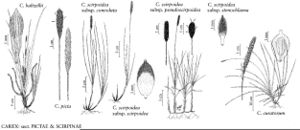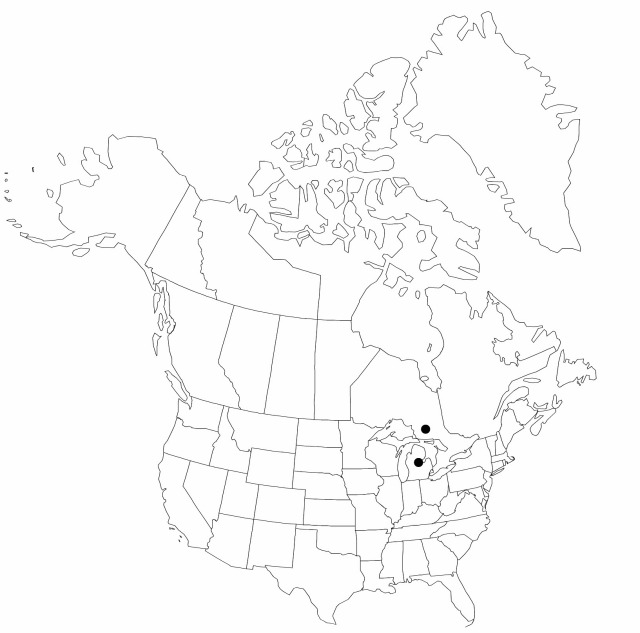Difference between revisions of "Carex scirpoidea subsp. convoluta"
Novon 7: 355. 1998.
FNA>Volume Importer |
FNA>Volume Importer |
||
| Line 10: | Line 10: | ||
|name=Carex scirpoidea var. convoluta | |name=Carex scirpoidea var. convoluta | ||
|authority=Kükenthal | |authority=Kükenthal | ||
| + | |rank=variety | ||
|publication_title=in H. G. A. Engler, Pflanzenr. | |publication_title=in H. G. A. Engler, Pflanzenr. | ||
|publication_place=20[IV,38]: 81. 1909 | |publication_place=20[IV,38]: 81. 1909 | ||
| Line 37: | Line 38: | ||
-->{{#Taxon: | -->{{#Taxon: | ||
name=Carex scirpoidea subsp. convoluta | name=Carex scirpoidea subsp. convoluta | ||
| − | |||
|authority=(Kükenthal) D. A. Dunlop | |authority=(Kükenthal) D. A. Dunlop | ||
|rank=subspecies | |rank=subspecies | ||
| Line 52: | Line 52: | ||
|publication year=1998 | |publication year=1998 | ||
|special status= | |special status= | ||
| − | |source xml=https://jpend@bitbucket.org/aafc-mbb/fna-data-curation.git/src/ | + | |source xml=https://jpend@bitbucket.org/aafc-mbb/fna-data-curation.git/src/f50eec43f223ca0e34566be0b046453a0960e173/coarse_grained_fna_xml/V23/V23_1045.xml |
|genus=Carex | |genus=Carex | ||
|section=Carex sect. Scirpinae | |section=Carex sect. Scirpinae | ||
Revision as of 20:04, 16 December 2019
Plants cespitose; rhizomes inconspicuous. Culms erect, (9.2–) 19.5–35(–38) cm. Leaves: sheaths and bases from previous year’s leaves absent; blades narrowly V-shaped in cross section, to 23 cm × 1.8 mm, widest leaves of pistillate culm less than 1.5 mm wide. Scales ovate, 2.4 × 1.2 mm. Perigynia ovate, 1.5–2.6 × 1–1.2 mm, less than or equal to 2.5 times long as wide, body tightly enveloping achene for entire length and width. Achenes 1–1.5 × 0.6–0.9 mm.
Phenology: Fruiting early Jun–Sep.
Habitat: Prairie pavement barrens
Elevation: 200 m
Discussion
Carex scirpoidea subsp. convoluta is the most geographically restricted of the subspecies and is distinguished by narrowly V-shaped leaves, especially of the flowering shoot, a strongly cespitose habit, and conspicuously more flowering shoots per plant than other subspecies.
Selected References
None.

